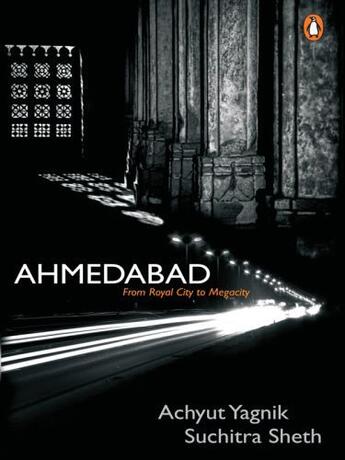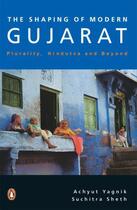-
Nombre de pages : (-)
-
Collection :
(-)
-
Genre :
(-)
-
Thème :
Non attribué
-
Prix littéraire(s) :
(-)
Résumé:
Founded in 1411 by Sultan Ahmed Shah on the banks of the river Sabarmati, Ahmedabad is today India's seventh largest city and also one of the subcontinent's few medieval cities which continues to be prosperous and important. Soon after it was established, the royal city of Ahmedabad became the... Voir plus
Founded in 1411 by Sultan Ahmed Shah on the banks of the river Sabarmati, Ahmedabad is today India's seventh largest city and also one of the subcontinent's few medieval cities which continues to be prosperous and important. Soon after it was established, the royal city of Ahmedabad became the commercial and cultural capital of Gujarat. When the Mughal Empire annexed Gujarat in 1572, Ahmedabad lost its political pre-eminence, but continued to flourish as a great trading centre connecting the silk route with the spice route. Briefly under the Marathas in the eighteenth century, Ahmedabad experienced a dimming of its fortunes, but with the beginning of British control from the early nineteenth century the city reasserted its mercantile ethos, even as it began questioning age-old social hierarchies. The opening of the first textile mill in 1861 was a turning point and by the end of the century Ahmedabad was known as the Manchester of the East. When Gandhi returned to India from South Africa in 1915, looking for a place where he could establish 'an institution for the whole of India', it was Ahmedabad he chose. With the setting up of his Sabarmati Ashram, the great manufacturing centre also became a centre for new awakening. It became the political hub of India, radiating the message of freedom struggle based on truth and non-violence. After Independence, it emerged as one of the fastest-growing cities of India and in the 1960s Ahmedabadis pioneered institutions of higher education and research in new fields such as space sciences, management, design and architecture. Yet, through the centuries, Ahmedabad's prosperity has been punctuated by natural disasters and social discord, from famines and earthquakes to caste and religious violence. Ahmedabadis have tried to respond to these, trying to meld economic progress with a new culture of social harmony. Coinciding with the 600th anniversary of the founding of Ahmedabad, this broad brush history highlights socio-economic patterns that emphasize Indo-Islamic and Indo-European synthesis and continuity, bringing the focus back to the pluralistic heritage of this medieval city. Evocative profiles of Ahmedabadi merchants, industrialists, poets and saints along with descriptions and illustrations of the city's art and architecture bring alive the city and its citizens.
Donner votre avis















